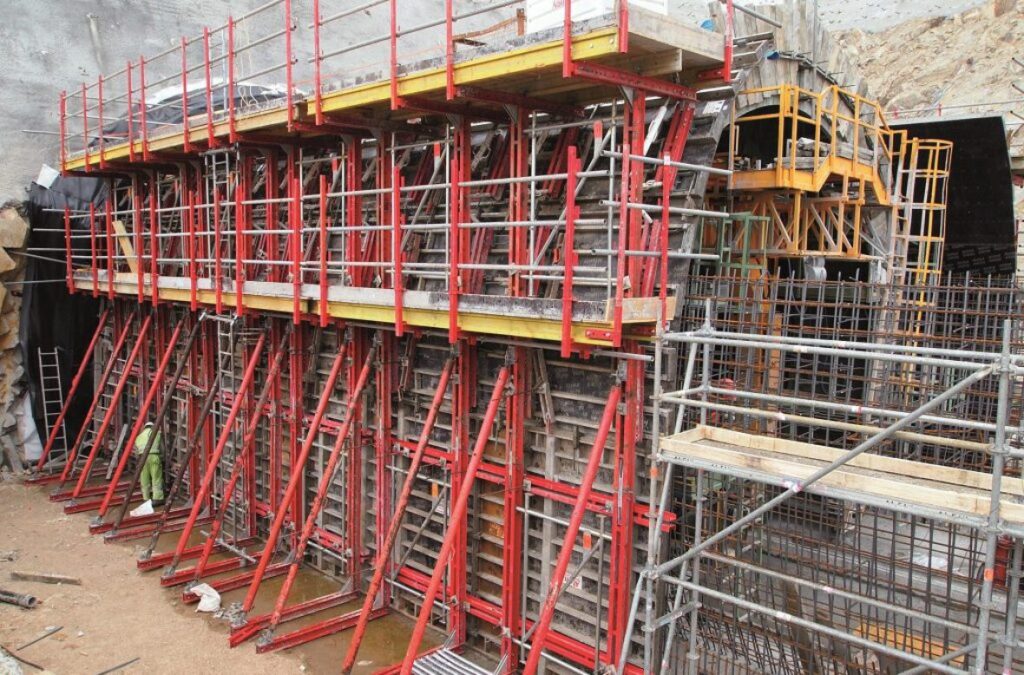Formwork in Construction

If you stopped by back in July and read our post about Falsework, you’ll remember that we promised we’d also cover formwork within the construction industry. Today, it’s time for us to make good on that promise.
The first and most obvious questions are what exactly is formwork and how does it differ from falsework? The simplest answer there is that formwork is a temporary structure which is used to retain fluid concrete in its designated shape until it hardens. It makes the “form” work.

Back in July 2017, we talked about temporary works and the key things that need to be considered when designing temporary structures. The same information is also relevant when it comes to designing and selecting a suitable formwork system. Perhaps that’s unsurprising as formwork systems are also temporary.
The actual structural design of formwork systems usually relies on design charts and tables. There are several different proprietary systems on the market which we here at LSY are experienced with.

LOADS TO BE CONSIDERED
There are various different types of loads that need to be considered when designing formwork systems. The most common loads are as follows:
- Self-weight of the formwork
- Imposed loads
- Concrete pressure loads
- Wind loading
- Horizontal loading
TYPES OF FORMWORK
Formwork is commonly used in construction because of its versatility, and each of those different types of formwork has a different set of design considerations. A few common examples include:
- Wall formwork (can be single faced, double faced or curved)
- Cantilevered formwork
- Soffit and beam formwork
- Column formwork
And of course there are other special applications for formwork including arch formwork, domes and underwater formwork. From a construction point of view, the other key elements to consider are the types of finishes and tolerances, which will be outlined in the project specifications provided by the engineer.

CONCLUSION
We here at LSY Engineering Consultants Ltd are involved in projects throughout the UK using various formwork systems, so if you want to learn more about your project then be sure to get in touch to discuss your project in further detail. We look forward to working with you!
Back to all news
